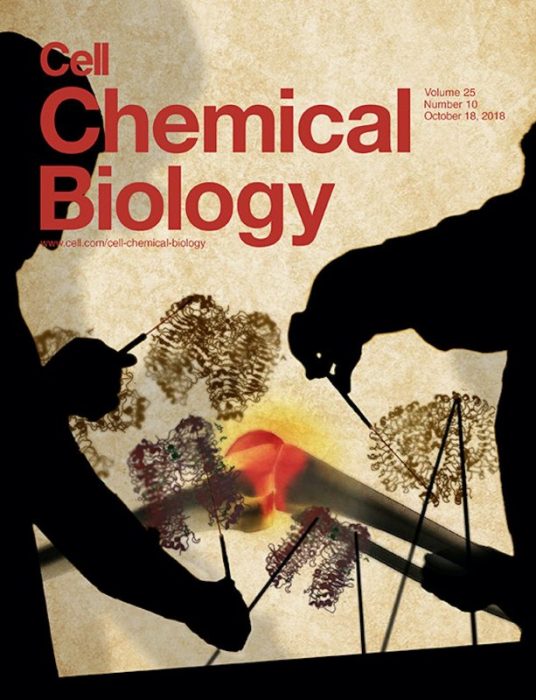
The human immune system is composed of the innate immune system and the adaptive immune system. The innate immune system includes epithelial tissues, immune cells, etc., which could effectively eliminate various pathogens.
Given the vast amount and kinds of cells as well as proteins in humans, one major function of the immune system is differentiating between pathogen and host; this function relies mostly on pattern recognition receptors (PRR). PRRs are able to recognize specific molecular patterns that are highly conservative among pathogens but missing in the host, which are known as pathogen-associated molecular patterns (PAMP). Many PRR have been discovered in humans, such as the Toll-like receptor (TLR) or Nod-like receptor (NLR). TLRs are the most well-studied among PRRs and play critical roles in immune responses.
Among 10 human TLRs, TLR8 is located in the endosome and active immune signaling pathway, upon recognition of dsRNA degradation products, which will lead to the activation of the immune system. TLR8 plays an import role in sensing an invasion of pathogens. However, many research has shown that overactivation of TLR8 can lead to autoimmunity. Thus, inhibition of TLR8 overactivation is envisioned as a new avenue of treatment for autoimmune diseases such as rheumatoid arthritis and Lupus.
Yin’s group from the University of Colorado at Boulder reported the first small-molecule TLR8 inhibitor in Nature Chemical Biology in January 2018: Small-molecule inhibition of TLR8 through stabilization of its resting state. In this research, they found these newly identified inhibitors locate at the interface of two TLR8 monomer, stabilizing theTLR8 dimer at resting state, thus preventing the activation of TLR8 as well as the overactivation of the immune system.
Based on this study, Yin’s group published new progress of TLR8 inhibitor recently in Cell Chemical Biology: Small-molecule TLR8 antagonists via structure-based rational design. Through collaboration with the Shimizu group from Tokyo University, cocrystal structure of TLR8 inhibitor with TLR8 dimer was obtained, which reveals the key interactions in the binding pocket, providing a structural base for rational drug design. This study utilized the structural information, and rational design and optimization led to the discovery of the second generation of TLR8 inhibitor -CU-CPT9s- with exceptional potency.

Cover of Cell Chemical Biology, republished with permission from Elsevier.
Cocrystal structure of TLR8 inhibitor with TLR8 provided directions for rational design. To utilize the hydrogen bond with G351, a variety of heterocycles were synthesized. The quinoline core yielded the most potent inhibitors. In a similar way, the installment of substituents at the 7-position was used to establish interactions with V520* and Q519*. Next, a hydroxyl group was introduced at the 12-position to explore extra contacts with S516* through a potential H-bond. The relatively open space on the bottom of the hydrophobic pocket recognized by CU-CPT8m suggested the possibility to engineer additional intermolecular contacts. Thus, installment of long-chain substituents at 12-position was applied, which yielded several extremely potent inhibitors. In particular, CU-CPT9d and 9f showed IC50 values of 0.1 ± 0.02nM and 0.8 ± 0.2 nM, respectively.
The specificity of these inhibitors against other TLRs was also tested using HKE-Blue cells individually overexpressing each human TLR as well as PBMCs. In these cells, CU-CPT9s specifically inhibited TLR8 without affecting other TLRs. Since TLR7 and TLR8 are highly homologous and both recognize single-stranded RNA as well as non-selective small-molecule agonists, it’s worth mentioning that these inhibitors showed specificity toward TLR8 over TLR7.
Using Western Blot, the anti-inflammatory effect of CU-CPTs was further confirmed with the down-regulation of NF-κB, a key downstream target for TLR8 signaling. CU-CPT9a showed significant reduction of nuclear NF-κB at a concentration of 500 nM. CU-CPT9 compounds were also tested on splenocytes isolated from mice harboring a human TLR8 transgene in a TLR7 knock-out background (hTLR8tg/TLR7-KO). CU-CPT9 compounds demonstrated antagonist activity against the human TLR8 transgene with no activity against mouse TLR9.
In summary, the structure-based rational design has led to the discovery of a second generation of TLR8 inhibitors with ~pM IC50 values. Assays in various cell lines, primary human PBMCs, and splenocytes from a transgenic mouse model validated the therapeutic potential of these antagonists. Overall, these results demonstrated a remarkable therapeutic potential of these novel TLR8 antagonists.
These findings are described in the article entitled Small-Molecule TLR8 Antagonists via Structure-Based Rational Design, recently published in the journal Cell Chemical Biology. This work was conducted by Zhenyi Hu and Hang Yin from the University of Colorado Boulder and Tsinghua University, Hiromi Tanji, Kentaro Sakaniwa, Umeharu Ohto, and Toshiyuki Shimizu from The University of Tokyo, Shuangshuang Jiang and Shuting Zhang from Tsinghua University, and Jean Chan and Albert Candia from Dynavax Technologies Corporation.









